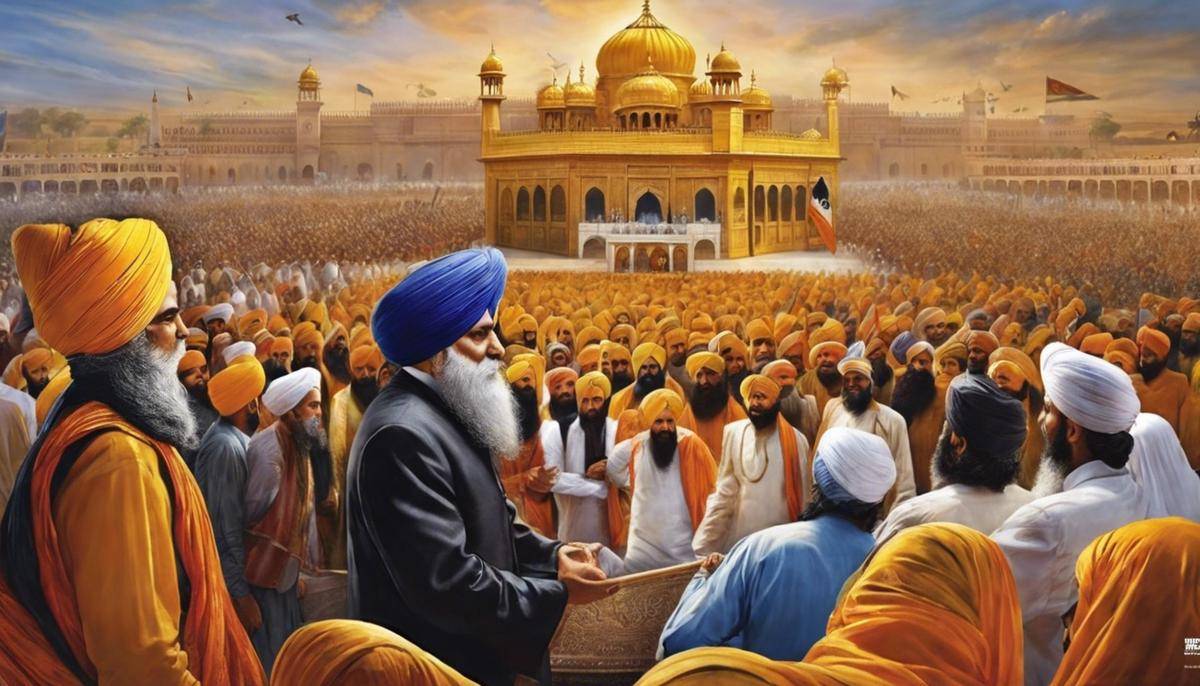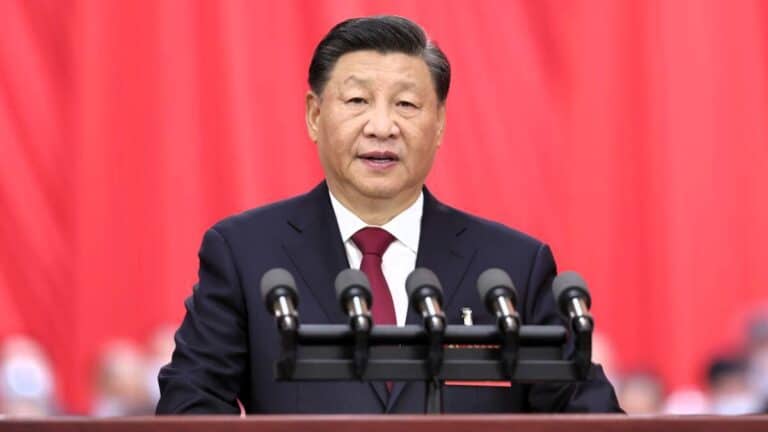As a colorful tapestry of distinct cultures, religions, and ideologies, India often finds itself grappling with movements aimed at community rights and autonomy. One such movement that has marked significant episodes in modern Indian history is the Khalistan Movement. This is a Sikh separatist movement seeking an independent state, Khalistan, derived from the word ‘Khalsa,’ which refers to the collective body of all baptized Sikhs. Encompassing various political, religious, and socio-cultural tensions that have been brewing since pre- and post-independence India, the Khalistan Movement elucidates the complex crosscurrents that underpin the nation’s diverse fabric.
This inquiry will delve into the historical ethos creating the Khalistan Movement’s genesis, major turning points, its implications and impacts, and its current state and potential directions, offering a panoramic view of this pivotal political phenomenon.
Historical Context of the Khalistan Movement
The Origin of the Khalistan Movement: A Deep Dive Into Its Historical Genesis
The Khalistan Movement constitutes an integral chapter of political history often overlooked in mainstream narratives. The term “Khalistan” signifies “Land of the Pure,” signifying its roots in Punjab’s regional Sikh community’s contemporary struggle for self-determination. Such a struggle found its flame in the latter half of the 20th century amid a cascade of historical and socio-political circumstances.
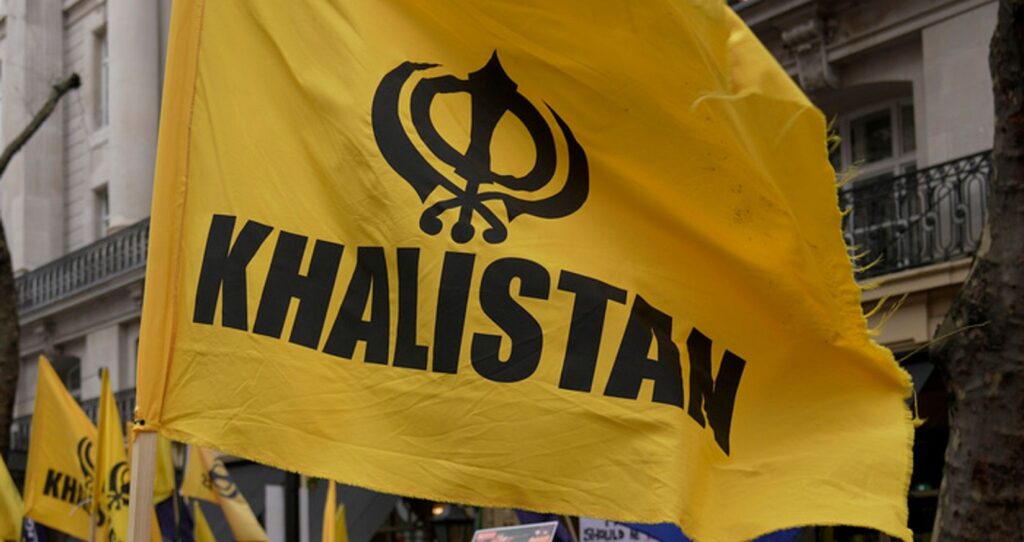
Firstly, understanding the Khalistan Movement demands recognition of British rule’s impact in the region. British colonial strategies, arguably, sowed the seeds for religious distinctions between Hindus and Sikhs, fracturing the unity of the Punjabi community. The Singh Sabha Movement (1873-1900) played a crucial role in this connection. It sought to define a unique Sikh identity distinct from Hinduism, largely in response to Christian missionary critiques. The enhanced awareness and pride in Sikh identity catalyzed by this movement, in turn, formed a platform on which the Khalistan Movement would later acquire momentum.
Secondly, the partition of India in 1947 set the stage for escalating tensions between Hindus and Sikhs. The Sikh community, suffering severe losses across life and property during the partition, found itself riddled with a deep sense of vulnerability and insecurity. The division sowed an enduring sense of resentment, further pushing the envelope towards the emergence of the Khalistan Movement.
The decade of the 1960s brought forth the Punjabi Suba Movement. It sought to carve out a Punjabi-majority region. However, with the inclusion of Hindu regions, the movement eventually culminated in the bifurcation of East and West Punjab. This led to a sense of marginalization and disillusionment among Sikhs, providing a fillip to the Khalistan ideology.
A critical trigger was the language census of 1961. Conscious of the impact of a Punjabi-speaking majority on state reorganization, many Punjabi Hindus reportedly listed Hindi instead of Punjabi as their first language. Unsurprisingly, the ensuing sense of betrayal colored inter-community relationships, the repercussions of which echoed in the Khalistan Movement.
Finally, the political manipulations of the 1970s and 1980s fanned the flames. Sikh political mobilization was met with increasing violence, resulting in the tragic Operation Blue Star. The operation, aimed at flushing out separatists from the Golden Temple, left deep scars on the Sikh community and thrust the Khalistan Movement into the international limelight.
A painstaking analysis of these circumstances is vital. It emphasizes the complexity of the Khalistan Movement, revealing it as more than just an isolated struggle for self-determination. Rather, it was an outcome of numerous historical winds, each carrying particles to the dune that bore the name Khalistan. Such insights reveal the need for an educated, empathetic lens when viewing and tackling contemporary ramifications in our converging world – a perspective that history well equips us to adopt.
Evolution of Khalistan Movement and Major Events
The Khalistan Movement, a multidimensional and complex phenomenon, evolved beyond the events leading to Operation Blue Star in 1984. Significantly, it is imperative to understand its evolution as a result of various sociopolitical changes in the state of Punjab and beyond.
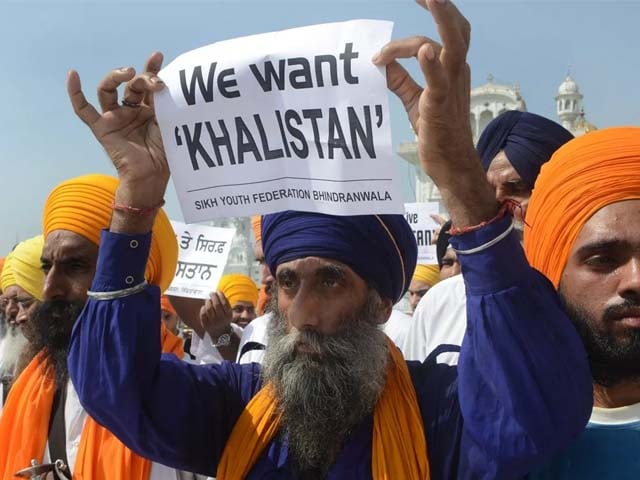
The infamous Operation Blue Star marked a critical turn in the Khalistan Movement. It was a military campaign launched by the Indian government in the Golden Temple Complex, the sanctum sanctorum of the Sikhs in Amritsar. Its intent was to flush out militants, but it resulted in considerable loss of life and damage to the holy shrine. This intensive act dramatically escalated the ailment, gambling a deep-seated resentment among Sikhs, becoming a milestone in the call for a separate Sikh state.
Black Thunder I and II, two counterinsurgency operations undertaken in 1986 and 1988, also form pivotal points in the trajectory of the Khalistan Movement. Albeit less controversial than Operation Blue Star, they fuelled the flames of conflict and brought the issue into the global media spotlight, further internationalizing the movement.
One must not underestimate the role of the Sikh diaspora in the evolution of the movement. Following the events of the 1980s, Sikhs started emigrating in larger numbers. Globally, Sikhs took on a more proactive role, providing financial and political support to the idea of Khalistan. The diaspora became heavily involved in lobbying foreign governments and organizations, thereby exerting significant influence on the movement’s course and narrative.
The infamous Air India Flight 182 bombing in 1985 wielded immense significance. The attack, carried out by Sikh extremists, not only marked the single deadliest aviation disaster in history until then, but it also signified a striking escalation of violence and the potential global reach of the Khalistan Movement.
Post-1990s, many of the movement’s leading figures were neutralized, and militancy in Punjab dramatically subsided. However, the idea of Khalistan remained dormant but not extinguished, signifying its complex and deeply rooted nature. Recent incidents, such as the Punjab unrest of 2015, opened up discourse on the movement’s relevance, marking an ever-evolving path.
The Khalistan Movement cannot be conceived narrowly. It adjoins a large array of events, factors, and drives from various quarters. The movement, continually evolving, reflects episodes of socio-political contestation, identity reinforcement, and struggle for self-determination.
Implications and Impact
Apropos of Operation Blue Star, it was a turning point in the Khalistan movement. The military operation, involving an attack on the Golden Temple, ignited deep-seated anger and resentment within the Sikh community. The assassination of Prime Minister Indira Gandhi by her Sikh bodyguards brought this resentment to a boiling point, leading to major public disorder and outcries for an independent Sikh state.
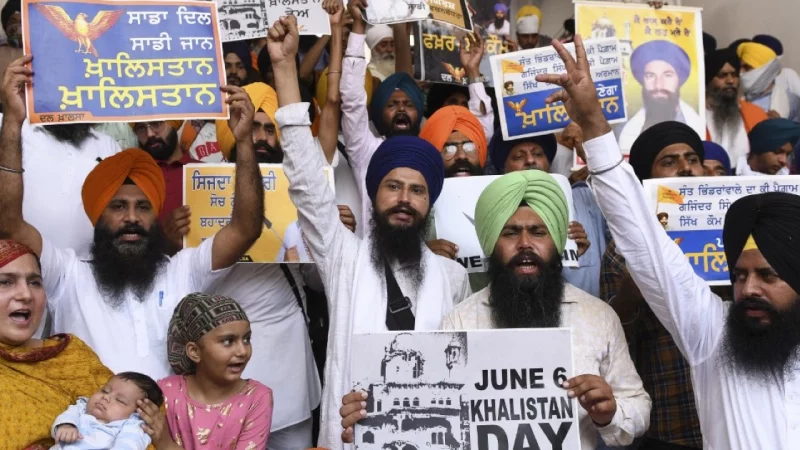
Actions such as Operation Black Thunder I and II further fueled the sense of alienation among the Sikhs. These operations staged to flush out militants from the Golden Temple, underscored the central government’s determination to suppress the movement, further deepening the divide between Sikhs and the central government.
As the situation within India fluctuated, the Sikh diaspora played an increasingly key role in the movement. The diaspora’s cultural identity, influenced by their experiences outside of India, contributed significantly to the continued propulsion of the movement. The diaspora aimed to raise international awareness about the movement while providing financial and political support.
The downing of Air India Flight 182 further internationalized the movement and underscored the severity of its violent dimensions. Orchestrated by Sikh extremists from Canada, the bombing was the deadliest act of aviation terrorism until the event of 9/11, which further demonstrated the intensity of the Khalistan demands.
After the 1990s, the Khalistan movement ostensibly moved into a dormant state, with reduced instances of militant activity and public support. Nevertheless, it left a lasting legacy. Several extremist groups remain on international terror watch lists for their links to the remnant Khalistani groups.
Most recently, episodes such as racial attacks on Sikhs and alleged human rights violations have revitalized the calls for an independent Sikh state. Social media has become a platform for ideological dissemination, and it has given a new voice to supporters of the movement.
The Khalistan movement should not be viewed as a monolithic push for a separate state; it is rather a multidimensional phenomenon. Elements of social marginalization, political disenfranchisement, and religious assertion are intertwined within the movement, making it a highly complex study of socio-political dynamics. Therefore, one should approach this issue with sensitivity, while working towards ensuring peace and communal harmony.
This multi-faceted nature of the Khalistan movement, along with the larger socio-political landscape, underlines the need for continued discourse and understanding on this complex issue. The movement’s evolution over the decades echoes issues of identity, belonging, and power, engaging scholars and policymakers alike in an ongoing exploration of concepts of nationhood and state.
Contemporary State and Future Outlook
The upshot of Operation Blue Star in 1984 was not merely military. At its core, the bloody conflict was an ideological battle with profound ramifications on the Sikh community’s socio-political landscape, serving as a major fulcrum in the Khalistan movement’s evolution. The assault on Akal Takht, the Golden Temple’s spiritual nucleus, ignited widespread resentment within the Sikh community, precipitating their alienation and fanning the flames of the Khalistan Movement.
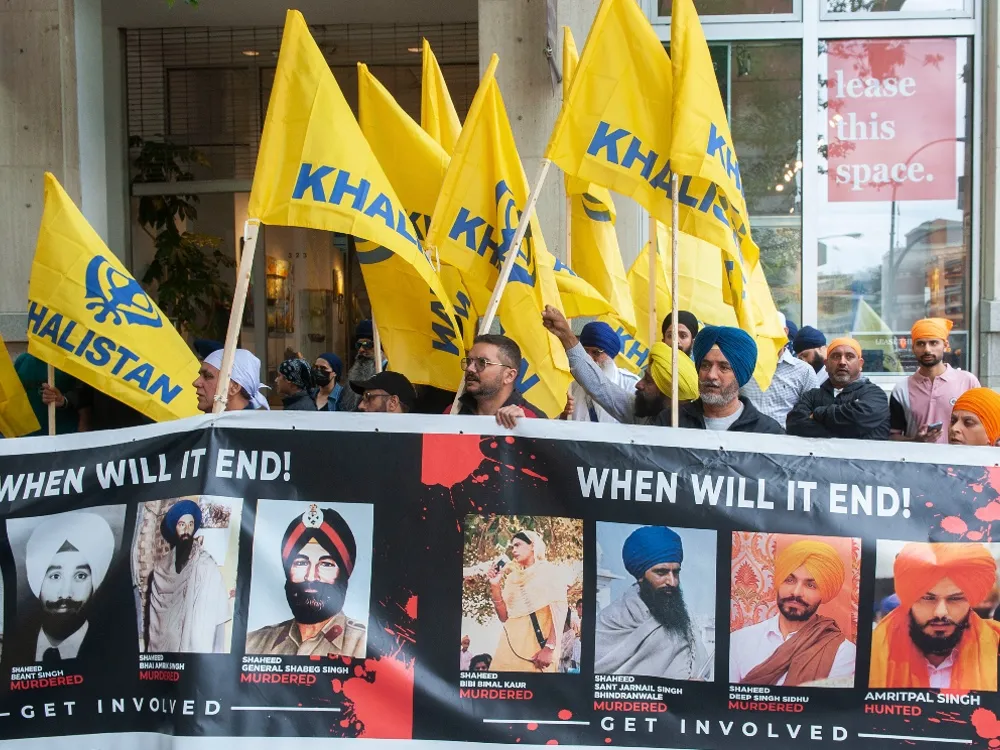
Months following Operation Blue Star came another incendiary event: the assassination of Prime Minister Indira Gandhi by her Sikh bodyguards. The sequences that unfolded thrust the movement into a darker realm of violence and counter-violence. It intensified the Sikh’s demand for self-rule and fortified the resolve for a separate Sikh homeland.
Shrouded in secrecy, the operations Black Thunder I and II further fuelled Sikh alienation. As government actions against Sikh extremists grew in Punjab, the operations garnered international attention; the crackdowns’ fallout precipitated a backlash among Sikhs worldwide, expanding the Khalistan movement beyond India’s geopolitical perimeters.
At this juncture, the Sikh diaspora emerged as a significant influence in the movement. Their contributions injected fresh vitality into Khalistan’s campaign, a testament to the dispersal of the Khalistan movement far beyond India’s boundaries. Emboldened by international support, the movement escalated dramatically and ominously, as evidenced by the Air India Flight 182 bombing in 1985, marking a grim milestone in the internationalization of the movement.
However, following tumultuous years of violent upheavals, the movement seemingly entered a dormancy phase post-1990s, primarily due to state oppressions and the exhaustion of militant campaigns. Its legacy, though, lingered, with sporadic calls for a sovereign Khalistan continuing to resonate among certain quarters of the Sikh diaspora.
In recent years, racial attacks and human rights violations against Sikhs have led to fresh calls for an independent Sikh state. Today, channels such as social media have emerged as powerful platforms for ideological dissemination, providing an outlet for supporters to voice their grievances, demands, and aspirations.
However, the Khalistan Movement cannot be understood as merely political or secessionist. Its multi-dimensional character reveals a regenerative battle for identity, belonging, and power. Given its enduring influence, a prudent response to this movement lies not in censorship or restrictions, but in a comprehensive appraisal and continued discourse that explores its broad complexities and implications.
As it stands today, the Khalistan Movement continues to adapt and shape-shift, navigating a future that’s as uncertain as it is inevitable. Its current status may be subdued in comparison to the fervor of the 1980s, but as the past has demonstrated, a flicker can quickly fan into a flare under the right circumstances. Maintaining a watchful vigilance on the pulse of the movement and adopting a nuanced handling of its myriad intricacies could prove pivotal in charting the trajectory of the movement’s future.
Conclusion
Understanding the Khalistan Movement goes beyond unraveling a separatist narrative. It illuminates the riveting dynamics of cultural interplay and political power struggle that shape a country’s narrative. The movement has seen its jarred ebbs and flows, reflected in terror, violence, politics, and a sense of kinship among the Sikh diaspora globally over the decades.
The future contour of the Khalistan movement is fundamentally linked with the acknowledgment of the profound sociopolitical chasms that birthed it and the thickness of the discourse around reconciling the vexing conflicts it presents. As societal changes usher in new dimensions of identity assertion and political expression, it remains to be seen how the specter of Khalistan will evolve, reflecting and influencing the dynamics in the Sikh community, regional politics, and India’s national ethos at large.

Hi, I’m Nathan Cross, a writer and avid reader who loves crafting articles for newspapers and online platforms. Words are my passion, whether I’m telling stories, sharing insights, or sparking conversations. When I’m not writing, you’ll find me lost in a book or out on the baseball field, enjoying the game that keeps me grounded. Writing, reading, and baseball—these are the things that define me.

